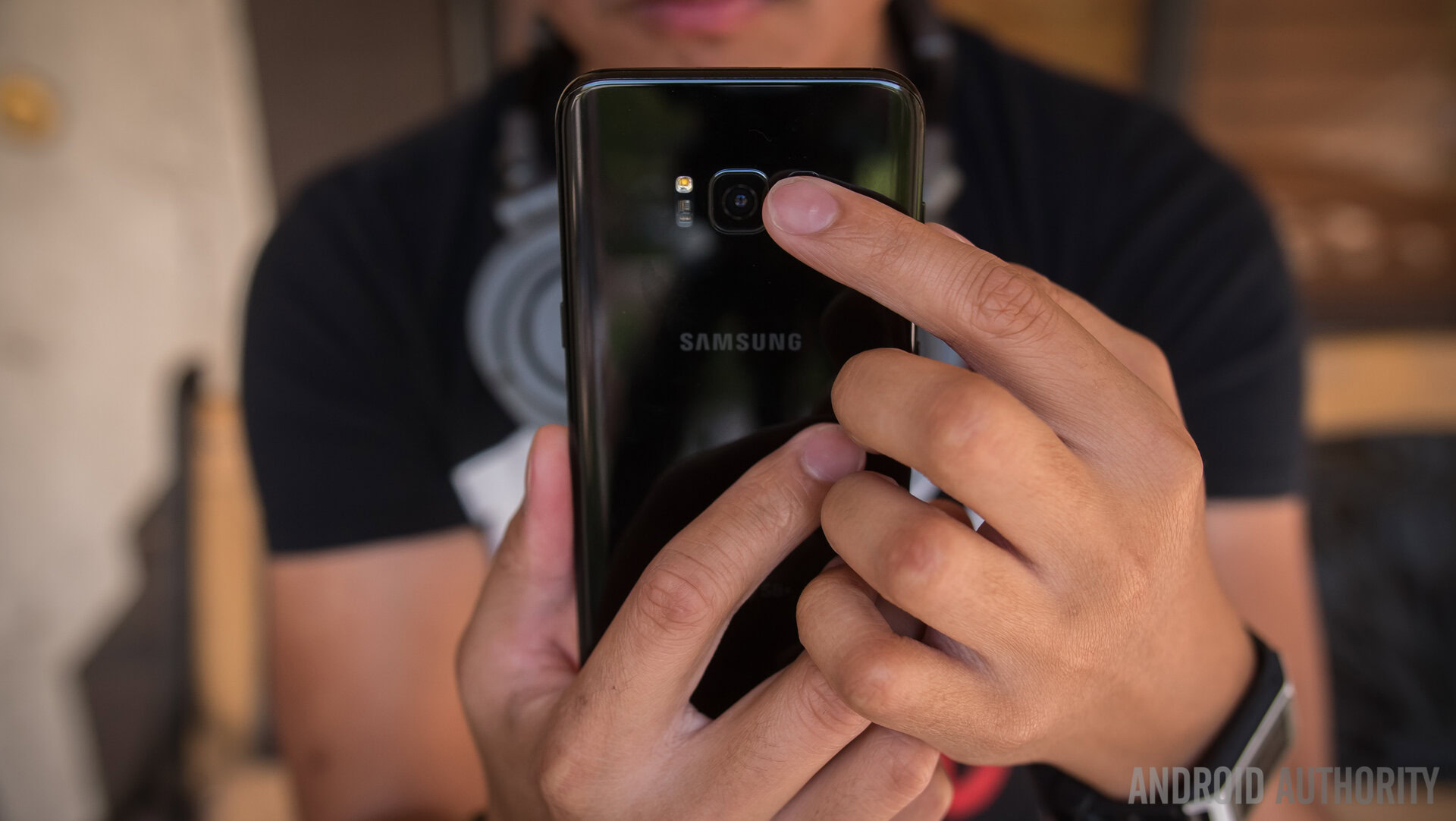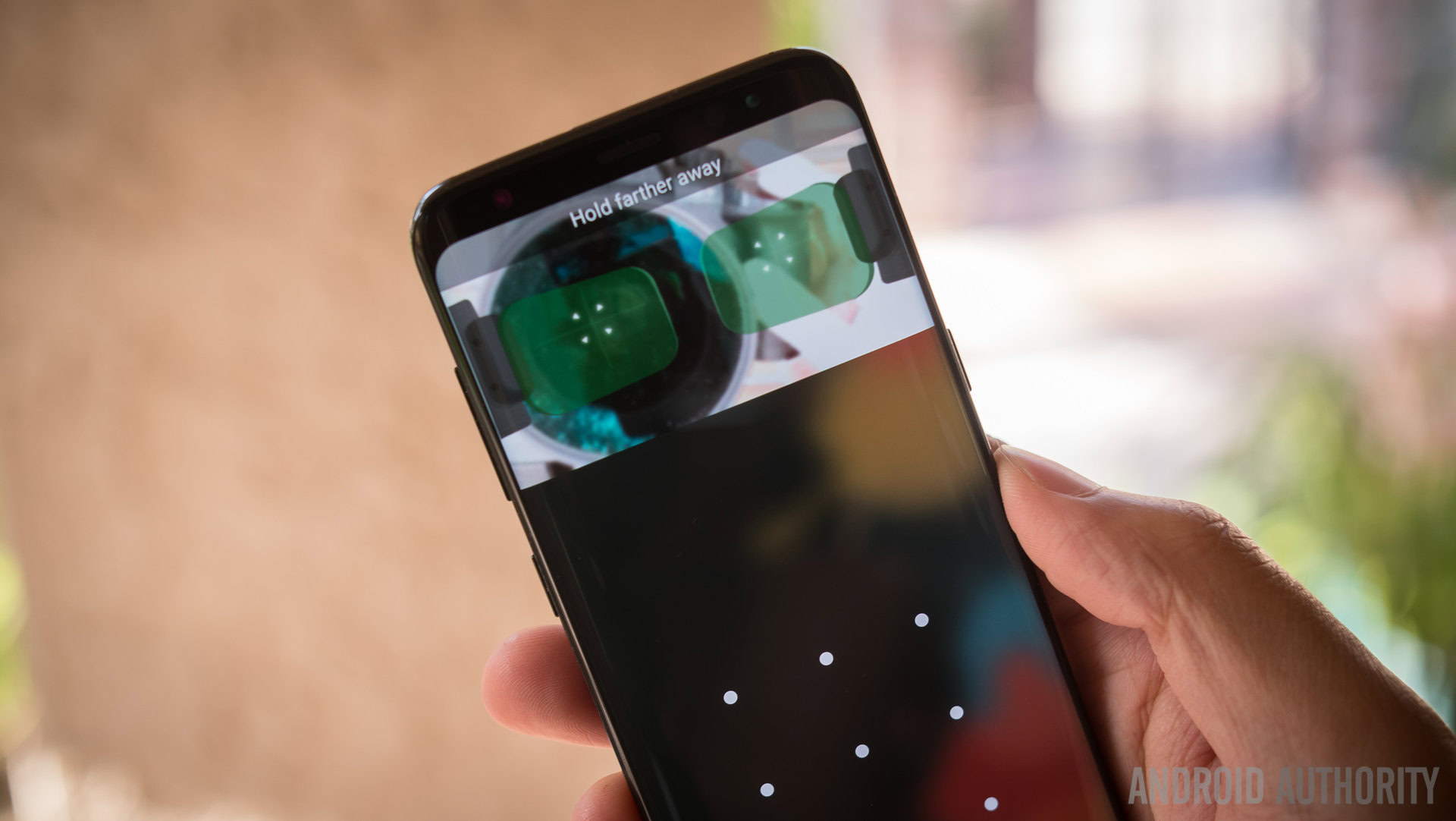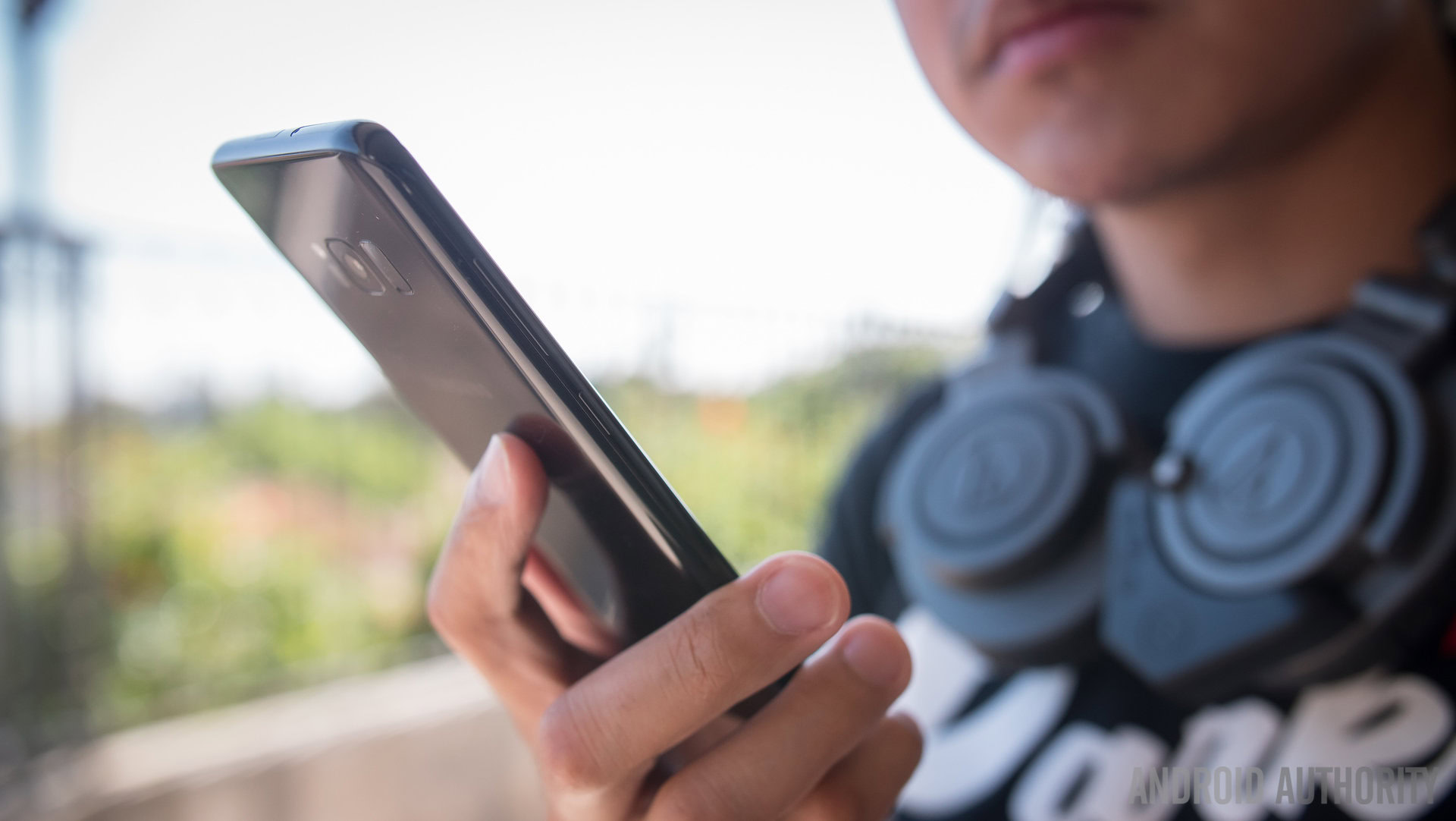Affiliate links on Android Authority may earn us a commission. Learn more.
How to unlock your Samsung Galaxy S8

While the Samsung Galaxy S8 is getting on there in years, it’s still a pretty solid older device, making it perfect as a hand-me-down. Just got yourself a second hand Galaxy S8? There are plenty of options available for unlocking your device, we’re here to help you decide the best way to unlock your Galaxy S8 or S8 Plus. From the iris scanner and face unlock, to the rear-mounted fingerprint scanner and the classic methods like PIN, pattern and password, we’ll help you find what’s best for you.
The first thing you need to know is there isn’t a perfect way to unlock your S8. Each option has its drawbacks and not everyone will like any or all of the available unlock options. But you’re still much better off locking your phone than not, so let’s look at the pros and cons of each technique.
Finger scanner
The finger scanner on the Galaxy S8 is in a high up, off-center location right next to the camera lens which is just dying to get covered in finger grease. It’s a terrible location, no doubt, but the scanner works just as quickly and reliably as it did when it was located on the front of the phone. If you can actually hit it blind, that is.
Samsung says they placed the scanner so awkwardly because of the positioning of the battery inside, even though this has never presented a problem to any other smartphone manufacturer. If you ask me though, the finger scanner is in the same awkward position as the spare tire in your car, and for the same reasons: because Samsung expects you to use the iris scanner first and the finger scanner as a backup.
The finger scanner is hard to feel out on the back but you do eventually get used to it. Not smudging the camera will always be a bit of an issue though and the chances you’ll have successful first time unlock attempts are limited when compared with a front-facing scanner. But even if you don’t use it, you can still enable a swipe gesture for dragging the notifications shade down. So that’s neat.
- Recommended for: those that don’t find the location too weird; people with glasses or contacts
- Pros: Quick and reliable
- Cons: Hard to reach and identify; camera smudges

Iris scanner
Easily the sexiest option for unlocking your Galaxy S8, iris scanning is typically the realm of military personnel and badasses in spy movies. The iris scanner on the Galaxy S8 is futuristic, kinda cool and arguably safer than most others.
But it does come with some downsides. Besides sometimes being painfully slow and persnickety, the iris scanner has issues with glasses and contact lenses. This is obviously an important consideration for the 75 percent of Americans that use corrective lenses of some sort.
However, after multiple failed attempts to unlock my S8 with my glasses on (after registering my naked pupils) I tried re-registering my irises with my glasses on and my S8 has had surprisingly little trouble unlocking in a snap ever since, even with my Coke bottles on. Your mileage may vary, but it’s worth a shot.
Even if you can successfully register your pupils and unlock your phone reliably in ideal conditions, life is rarely ideal. Low light conditions and bright sunlight can wreak havoc with this unlocking method.
Iris unlocking is also difficult to pull off while you’re walking because it frequently requires you to adjust the positioning of the phone to your face. If you can train yourself to play by the rules it works pretty great, but a lot of people find it too fiddly to use as a primary unlock method. Waking your device, swiping the screen, then positioning your eyes to unlock is nowhere near as fast as unlocking with a fingerprint scanner.
- Recommended for: people without glasses or contacts, those that wear gloves a lot.
- Pros: Cool and very secure
- Cons: Fidgety; requires fairly ideal lighting conditions and positioning
Face unlock
While this might be the easiest option, it’s far from the safest. Not surprisingly, Face unlock on the S8 can be fooled by a photograph of you. It might be fun to try but it is absolutely not recommended as a secure locking mechanism.
If you like to live dangerously or firmly believe that your special facial aura couldn’t possibly be replicated by a photo, just know that you won’t be able to use Face unlock to authenticate Samsung Pay transactions like you can with your fingerprint, traditional unlocking method or iris (in future).
- Recommended for: those that don’t care about security
- Pros: None
- Cons: Insecure

PIN, pattern and password
Sometimes the old ways are the best ways, and I expect a lot of people will end up sticking with one of these tried and trusted methods of unlocking their S8. They’re familiar, relatively fast, and not as insecure as some options like face unlock. However, as with all unlock methods, there are some caveats.
Like the others, these methods have issues too: patterns can be easy to guess because you typically leave finger streak marks on your display and the vast majority of pattern locks start in the top left hand corner, further reducing their security. Of course, some smartphone hygiene, fancy finger waving before and after entering your pattern and making a more complex pattern can all help, but as we all know, most folks are pretty lazy.
PINs can be much more secure than patterns as they can support up to 16 digits (compared to just nine pattern points) and each one has 0-9 as possible options. But PINs are surprisingly easy to guess based on the movements of your hands and phone and very few people use such long numeric PIN codes as to make them uncrackable.
Which leaves passwords. A strong alphanumeric password can be great for locking down your device because it has 16 possibilities including 0-9, A-Z and grammatical marks. And yet, how many people do you know that still lock their phone with a password?
This is because they can be quite slow to enter and potentially easy to brute force when plugged into a computer, just like any other password (although automatically triggered kill switches or factory resets can alleviate this as a possibility). They’re still far more secure than a weak PIN or non-complex pattern, but they’re also far less convenient, and we all like convenience.
- Recommended for: anyone that finds the newer methods too weird or unreliable
- Pros: good combination of speed and security
- Cons: speed decreases as complexity increases
What should you use?
Ultimately, that’s up to you. Some folks will be willing to learn the peculiarities required to get iris unlocking working every time (it’s actually not that bad once you get used to it). Others will go for the more familiar fingerprint scanner as long as its location doesn’t put them off. Still others will stick with the regular screen-based methods because they’re more fool-proof.
But the truth is you don’t need to pick just one. You can have your irises and multiple fingerprints registered along with a backup PIN, pattern or password. You can then choose your unlocking method based on the circumstances. Riding a bike? Maybe the fingerprint sensor is best. Sitting at your desk? Go with the iris scanner. Walking down the street? Swiping a pattern or punching a code makes the most sense. With half a dozen different options though, you’re sure to find one that suits you.